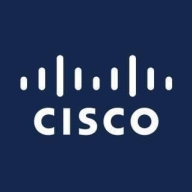

Find out in this report how the two ZTNA solutions compare in terms of features, pricing, service and support, easy of deployment, and ROI.
At Amazon, we knew exactly how much it would cost if a fulfillment center was down for an hour.
From my point of view, the biggest return on investment when using Cisco Secure Access is the security it provides, and I believe the best word to describe it is best security, ensuring our protection.
There was a significant cost reduction.
If you were moving from a traditional on-premise NAC that was 100% managed by the IT department, there would be great savings in going to a cloud-based NAC with Portnox.
This stems from their original business in networking, integrating router and switch operations, as well as security devices.
Although Cisco is reliable, the process to raise a support ticket has become more complex, requiring specific user accounts and access to specialized platforms.
Our engineers are very satisfied with the features, technical assistance, and documentation provided by Cisco.
The main area needing improvement is the technical knowledge of support staff.
They respond very immediately and provide detailed, amazing support.
I was seeing weird things, and they were able to explain things to me and help me quickly find a resolution.
We turn the traffic to the Cisco Secure Access cloud, and we can manage and apply the policies that are necessary, making it very easy to scale the solution.
I would rate scalability at eight to nine out of ten.
Cisco Secure Access scales with the growing needs of our company.
I rate the stability of Cisco Secure Access as ten out of ten.
The solution is stable enough, and I did not experience any latency or performance issues.
I have not experienced any downtime, crashes, or performance issues.
The product itself is available and its uptime is 100%.
In the four years that I used Portnox, if it crashed or the server crashed, that would not have been more than once.
If there is a version one and another version, the communication between the organization using it and Portnox should be firm so they can coordinate effectively.
Modernization is needed, specifically in the enhancement of security features and functionality.
Previously, sending an email would automatically create a ticket, but now it requires accessing specific portals, making the process complicated.
Prices are high when compared to competitors, which makes it challenging to position the product with customers.
Ideally, we should be able to search for any MAC address in the database, regardless of its authentication status, to see all its associated groups and potential conflicts.
When I'm doing filtering at times, it doesn't filter the items properly.
They don't have much support during Asia Pacific hours.
Renewal prices have been surprisingly high.
Cisco is known for being a premium product, and its pricing reflects this.
The main issue with pricing is that it is higher compared to other competitors.
If you compare Portnox with all other well-known standard products, it is the cheapest.
The pricing is a bit high, possibly due to the cloud features and running instances across regions like the US, Asia, and Europe.
You are charged according to the number of users.
It eliminates the hassle of switching on VPNs and provides a direct connection to resources via Cisco Secure Access.
The main feature of interest to me and the customers is DNS security and Integrated Secure Web Control (ISWC).
The most valuable feature of Cisco Secure Access is the level of security it provides.
It's notable how Portnox has improved operational efficiency.
It is a very robust application because three teams use that part: the network team, the security team, and the support people.
It is very easy to implement on our current network hardware.
| Product | Market Share (%) |
|---|---|
| Cisco Secure Access | 1.3% |
| Portnox | 1.6% |
| Other | 97.1% |


| Company Size | Count |
|---|---|
| Small Business | 6 |
| Large Enterprise | 7 |
| Company Size | Count |
|---|---|
| Small Business | 12 |
| Midsize Enterprise | 5 |
| Large Enterprise | 7 |
Cisco Secure Access is a comprehensive Security Service Edge (SSE) solution (a key component of a SASE solution) that addresses the complexities of securing a hybrid enterprise. Cloud-delivered and grounded in zero trust, it delivers a unique blend of user simplicity and IT efficiency for frictionless, secure access to all applications—SaaS (with gen AI), private apps, and the internet—regardless of user location or device. Secure Access protects users, data, and devices against relentless, sophisticated, and constantly evolving threats including AI-driven attacks and identity breaches.
Provides all core SSE components (ZTNA, SWG, CASB, and FWaaS) plus extended capabilities.
Includes VPN-as-a-Service (VPNaaS), data loss prevention (DLP), AI Assistant, visibility/control/guardrails for generative AI use, digital experience monitoring (DEM), reserved IP, remote browser isolation (RBI), DNS-layer security, flexible security enforcement (in cloud or on-premises), policy verification, and more.
Protects users as they seamlessly access resources and apps with no extra steps needed, regardless of protocol, port, or level of customization
Simplifies IT operations through a single client, single dashboard, single license, and unified policies.
Lowers risk with least privilege, granular controls backed with unmatched threat intelligence of Cisco Talos.
Eases interoperability with other products from Cisco and third-party vendors with common administrative controls, data structures, and policy management.
Robust integrations
Integrates with Cisco Identity Intelligence to protect against the startling increase in identity-based attacks.
Integrates with many SAML Identity Providers (IDPs) such as AD, Azure AD, Okta, Ping, etc.
Integrates with Cisco offerings including SD-WAN, Splunk, XDR, Thousand Eyes, third party technologies such as Menlo RBI, Chrome Enterprise Browser, and AppOmni for SSPM.
Portnox provides advanced network visibility and proactive security without complexity, ensuring easy setup and scalability. Its agentless nature and intuitive design enable seamless device management and system integration, promoting efficient network operations and endpoint security.
Portnox is known for offering comprehensive network access control, providing firms with vital tools for managing authentication and securing endpoint devices. It's praised for ease of use in integrating with systems such as RADIUS servers and offering detailed analytical capabilities to ensure compliance and control unauthorized access. While users appreciate the intuitive interface and device management, improvements have been suggested in the areas of better GUI, integration with firewalls, and enhanced configuration methods. Portnox aids in handling dynamic VLAN assignments and securing access in both wired and wireless networks, proving particularly valuable for on-premises and remote environments.
What are the key features of Portnox?In industries where network security is paramount, such as finance and healthcare, Portnox is implemented to fortify access control and manage endpoint connections effectively. Its ability to secure both on-premises and remote environments makes it a versatile choice across sectors that require stringent access management, particularly where unauthorized device connections pose significant risks.
We monitor all ZTNA reviews to prevent fraudulent reviews and keep review quality high. We do not post reviews by company employees or direct competitors. We validate each review for authenticity via cross-reference with LinkedIn, and personal follow-up with the reviewer when necessary.